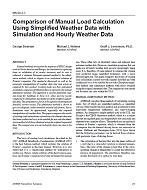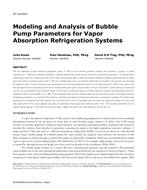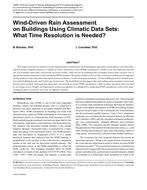It is known that a vapor-resistant layer on the inside of an insulated envelope in cold climates is needed to prevent excessive diffusion of water vapor from indoor air into the building envelope. However, the required magnitude of this vapor resistance has been debated in recent years. In this paper, the moisture transfer between indoor air and the building envelope and the moisture performance of a building envelope that has no plastic vapor retarder is analyzed with field measurements and numerical simulations. The results show that the diffusion resistance of the internal surface should be greater than the diffusion resistance of the external surface for a structure safe from moisture but that the vapor resistance of the vapor retarder can be significantly below that provided by polyethylene, even in cold climates. Meanwhile, the moisture transfer between indoor air and the building envelope can moderate the indoor humidity, which improves indoor climate and comfort.
Authors: Carey J. Simonson, Ph.D.; Mikael H. Salonvaara; Tuomo Ojanen
Citation: Thermal Performance of the Exterior Envelopes of Buildings VIII
Keywords: December, Florida, 2001
Citation: Thermal Performance of the Exterior Envelopes of Whole Buildings VIII
Product Details
- Published:
- 2001
- File Size:
- 1 file , 850 KB
- Product Code(s):
- D-7971


